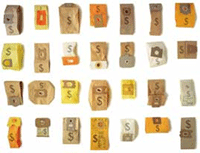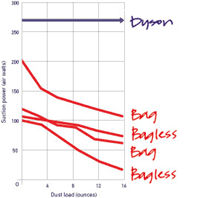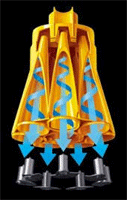The Story of Dyson Vacuum Cleaners
James Dyson
You know the feeling when some everyday product lets you down. You wish someone could solve the problem. James Dyson does that. He is a man who likes to make things work better. With his research team he has developed products that have achieved sales of over $10 billion worldwide. Read about the Dyson vacuum history.
 The Bag Problem
The Bag Problem
In 1978, while vacuuming his home, James Dyson realized his bag vacuum cleaner was constantly losing suction power. He noticed how dust quickly clogged the pores of the bag and blocked the airflow, so that suction dropped rapidly. He set to work solve this problem. 5 years and 5127 prototypes later, the world’s first cyclonic bag less vacuum cleaner arrived.
 No place for new technology
No place for new technology
James Dyson offered his invention to major manufacturers and one by one they turned him down, apparently not interested in new technology. They seemed determined to continue selling bags worth $500 million every year. Later, Hoover’s Vice President for Europe, Mike Rutter said on UK national TV. “I do regret that Hoover as a company did not take the product technology off Dyson; it would have lain on the shelf and not been used”.
 The first Dyson
The first Dyson
So James Dyson decided to manufacture his own vacuum cleaner. In June 1993 he opened a research center and factory near his home in England to begin making his machine. It even collected the finest particles of dust (microscopic particles as small as cigarette smoke) without clogging. The result was the Dyson Cyclone, the first Dyson vacuum cleaner that didn’t lose suction.
 Something to hide
Something to hide
In under 2 years, Dyson was the UK’s best selling vacuum. Miele, Bosch, Siemens, Electrolux and Philips tried to stop Dyson showing how their models clogged and lost suction. Later, manufacturers stated to admit that bags reduced suction and then tried to jump on the bandwagon produce bagless vacuums, but these also clogged just like a bag vacuum. Meanwhile 60% of people were buying a Dyson because it was recommended to them.
 More cyclones
More cyclones
The original team of 3 Dyson engineers grew to 350 scientists in a new research center, investigating ways to make products work better. Determined to create vacuums with even higher suction, the cyclonics team set to work developing an entirely new type of cyclone system. The discovered that spreading higher airflow through many cyclones generated even higher suction power, which picked up more dust from the floor. Hence the Root8Cyclone� was created.
